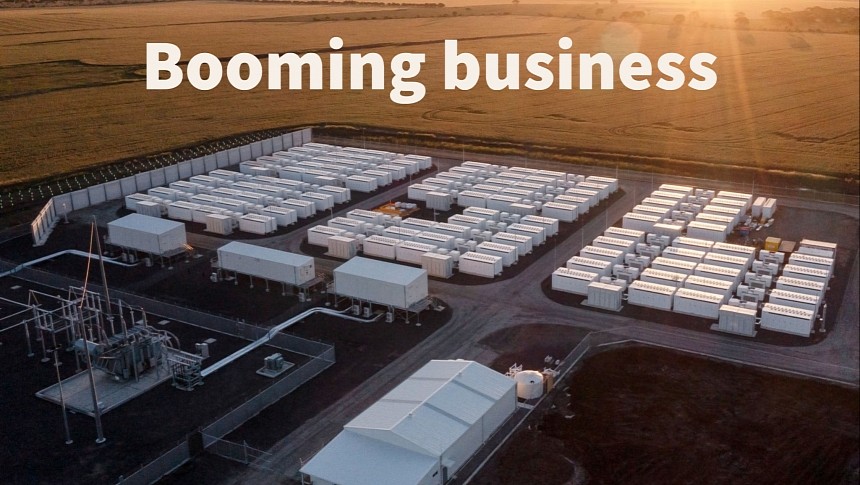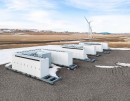Energy storage is an important part of Elon Musk's plans for decarbonization, potentially making peaker plants redundant. Tesla announced building its second energy-storage-battery megafactory in Shanghai, China, to supply Megapack storage batteries to international markets.
Tesla might be best known for its automotive business, but it's also an energy company, producing anything from solar panels to energy storage batteries. Its most important product is the Megapack, an advanced storage battery system designed for large-scale energy projects. Tesla's energy business also produces smaller storage battery packs for different use-case scenarios, such as the Powerwall.
Tesla Megapacks can store solar and wind energy when plentiful and release it when electricity demand rises. This effectively makes peaker electricity plants unnecessary, preventing millions of tons of carbon dioxide and other harmful gases from being released into the atmosphere. Each Megapack stores around 4 MWh of energy, enough to power about 3,600 houses for an hour.
Tesla's Megapack business is booming as more projects around the world use its storage batteries. Despite costing around $2 million per Megapack, the entire production is sold out, with the earliest opening in Q1 2025. Tesla needed more megafactories besides the existing one in Lathrop, California, and the announcement of its first Megapack factory in Shanghai was long in the making. The megafactory is scheduled to break ground in the third quarter of the year and start production in the second quarter of 2024.
Tesla shared a photo of the signing ceremony on social media and said it plans to produce 10,000 Megapack units every year. This represents a 40 GWh capacity for the first phase, which compares favorably to the 47 kWh battery storage capacity of the market leader CATL. The Chinese company is still the bigger winner here since Tesla will use its LFP cells for local Megapack production. This will give Tesla an important cost advantage.
Despite being a smaller market than the automotive sector, the stationary storage business is less prone to economic conditions. Companies and governments buy the Megapacks for large-scale projects, and the global stationary energy storage market is projected to reach $250 billion by 2031. Australia alone has around 250 energy storage projects with plans to spend $43 billion on a potential total capacity of about 130 GWh, according to BloombergNEF.
An entirely fossil-fuel-free global energy system would require about 240 TWh of battery storage, Elon Musk revealed during 2023 Investor Day on March 1. Tesla has now released Master Plan Part 3 in full, showing that battery storage is an important part of our sustainable future, as imagined by Elon Musk. Tesla will ramp up production at its first megafactory in Lathrop and is preparing the second Megapack production facility in Shanghai to meet global storage battery demand. Tesla would likely build more megafactories in other markets, such as Europe, although no plans have been yet revealed.
Tesla Megapacks can store solar and wind energy when plentiful and release it when electricity demand rises. This effectively makes peaker electricity plants unnecessary, preventing millions of tons of carbon dioxide and other harmful gases from being released into the atmosphere. Each Megapack stores around 4 MWh of energy, enough to power about 3,600 houses for an hour.
Tesla's Megapack business is booming as more projects around the world use its storage batteries. Despite costing around $2 million per Megapack, the entire production is sold out, with the earliest opening in Q1 2025. Tesla needed more megafactories besides the existing one in Lathrop, California, and the announcement of its first Megapack factory in Shanghai was long in the making. The megafactory is scheduled to break ground in the third quarter of the year and start production in the second quarter of 2024.
Tesla shared a photo of the signing ceremony on social media and said it plans to produce 10,000 Megapack units every year. This represents a 40 GWh capacity for the first phase, which compares favorably to the 47 kWh battery storage capacity of the market leader CATL. The Chinese company is still the bigger winner here since Tesla will use its LFP cells for local Megapack production. This will give Tesla an important cost advantage.
Despite being a smaller market than the automotive sector, the stationary storage business is less prone to economic conditions. Companies and governments buy the Megapacks for large-scale projects, and the global stationary energy storage market is projected to reach $250 billion by 2031. Australia alone has around 250 energy storage projects with plans to spend $43 billion on a potential total capacity of about 130 GWh, according to BloombergNEF.
An entirely fossil-fuel-free global energy system would require about 240 TWh of battery storage, Elon Musk revealed during 2023 Investor Day on March 1. Tesla has now released Master Plan Part 3 in full, showing that battery storage is an important part of our sustainable future, as imagined by Elon Musk. Tesla will ramp up production at its first megafactory in Lathrop and is preparing the second Megapack production facility in Shanghai to meet global storage battery demand. Tesla would likely build more megafactories in other markets, such as Europe, although no plans have been yet revealed.
Tesla opening Megapack factory in Shanghai to supplement output of Megapack factory in California https://t.co/hDpqoyNeOx
— Elon Musk (@elonmusk) April 9, 2023









